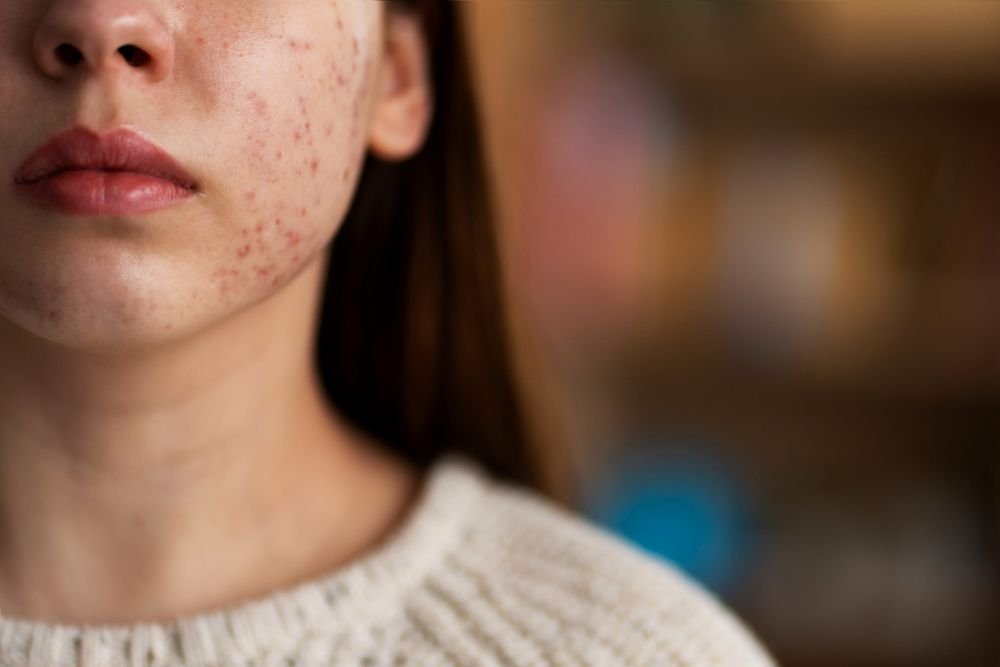Summer heat rash, also known as prickly heat, is a common skin condition that occurs when sweat becomes trapped under the skin during hot and humid weather.
This often leads to irritation and discomfort, characterized by small, red bumps or blisters on the skin. Understanding the causes, symptoms, treatment, and prevention of summer heat rash is crucial for managing this condition effectively.
Table of Contents
What Causes Summer Heat Rash?
Sweat glands are essential for regulating body temperature by producing sweat, which normally evaporates to cool the skin.
However, in hot and humid conditions, sweat can become trapped under the skin when it fails to evaporate properly.
This trapped sweat then clogs sweat ducts, leading to inflammation and the formation of heat rash.
Factors that increase the risk of heat rash include:
- Infants and young children: Whose sweat ducts are not fully developed, making them more susceptible.
- Strenuous physical activity: Engaging in activities that induce heavy sweating.
- Certain clothing: Tight-fitting or non-breathable fabrics like nylon or polyester can trap sweat.
- Obesity: Excess weight can hinder sweat evaporation, increasing the likelihood of heat rash.
- Certain medications: Such as diuretics and anticholinergics, which can alter sweating patterns and contribute to heat rash.
Revitalize Your Skin from Within with Digestive Cell Renewal! Click Here to See How You Can Look Younger!
Symptoms of Summer Heat Rash

Summer heat rash typically presents as red or pink bumps on areas where sweat is commonly trapped, such as the neck, chest, back, and groin.
The affected skin may feel itchy and prickly, due to the inflammation of the sweat ducts beneath the skin’s surface.
Elevate Your Skin’s Appearance with Revolutionary Digestive Cell Renewal! Click Now to See the Difference!
Treating Summer Heat Rash
While heat rash generally resolves on its own within a few days, cooling down the affected area and alleviating symptoms can help expedite recovery:
- Cool down your body: Seek air-conditioned environments or take cool showers to lower body temperature.
- Wear loose, breathable clothing: Opt for garments made of cotton or other natural fibers that facilitate air circulation.
- Avoid scratching: Resist the urge to scratch affected areas to prevent further irritation and potential infection.
- Apply cool compresses: Use a damp cloth or ice pack wrapped in a towel to soothe the rash for up to 20 minutes at a time.
- Use soothing lotions: Products like calamine lotion, oatmeal baths, or aloe vera gel can provide relief from itching and discomfort.
Achieve Radiant Skin with Digestive Renewal and Cellular Transformation! Click Here to Discover Your Skin’s New Era!
Preventing Heat Rash
Taking proactive measures is essential in preventing heat rash, especially during warmer months:
- Stay cool: Minimize strenuous activities during peak heat hours and seek shaded or air-conditioned spaces.
- Stay hydrated: Drink plenty of fluids throughout the day to regulate body temperature and replenish fluids lost through sweating.
- Choose breathable clothing: Opt for loose-fitting, lightweight attire made of natural fibers to promote air circulation.
- Take cool showers: Particularly after sweating, to cleanse the skin and maintain a cool body temperature.
- Avoid tight clothing: Which can restrict airflow and exacerbate heat rash.
Preventing Recurrence of Heat Rash
To reduce the risk of heat rash recurring, consider these additional tips:
- Limit outdoor activities: Especially during the hottest parts of the day; opt for cooler times like early morning or evening.
- Use cooling sprays: Look for products containing soothing ingredients like aloe vera or cucumber to refresh skin throughout the day.
- Optimize bedding: Choose breathable sheets made of cotton or natural fibers, and consider using a cooling mattress pad for added comfort.
- Choose non-comedogenic sunscreen: Select a sunscreen that won’t clog pores to protect your skin without aggravating summer heat rash.
Achieve Smooth, Youthful Skin with Digestive System Renewal! Click to Begin Your Journey to Timeless Beauty!
When to Seek Medical Advice
While summer heat rash typically resolves with self-care, it’s important to consult a healthcare professional if:
- The rash is severe or widespread.
- It persists or worsens despite home treatment.
- You develop fever, pus-filled blisters, or signs of infection.
- You have any concerns about the rash or its symptoms seem unusual.
Conclusion
Understanding summer heat rash and how to manage it effectively is crucial for maintaining comfort and skin health, especially during warmer seasons.
By adopting preventive measures and promptly treating symptoms, you can minimize the impact of summer heat rash and enjoy the summer months without discomfort.

